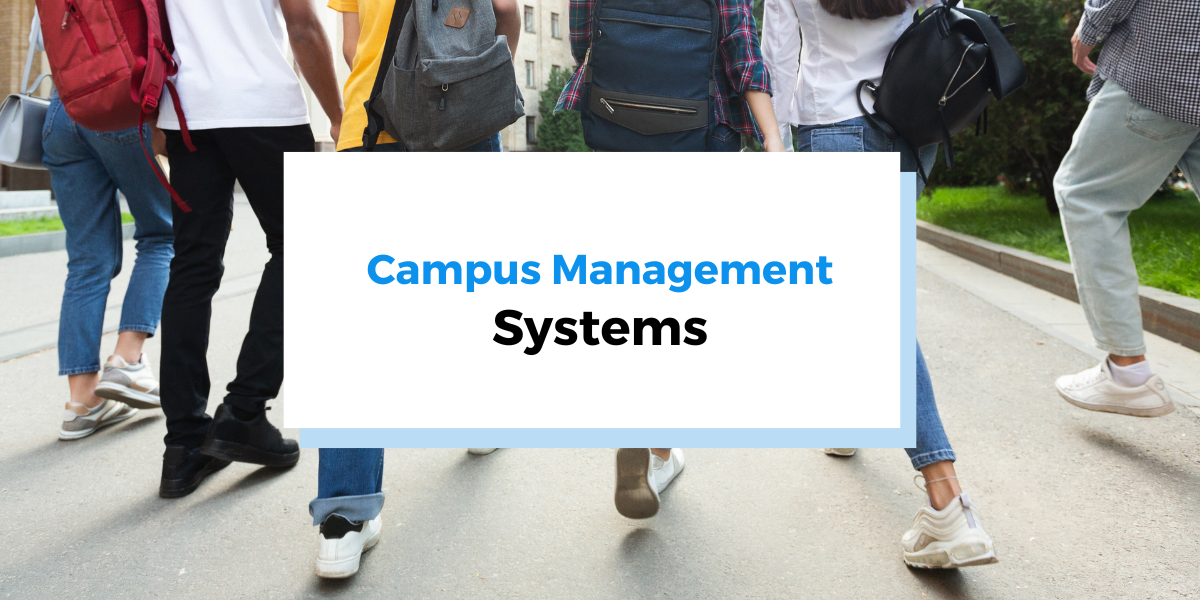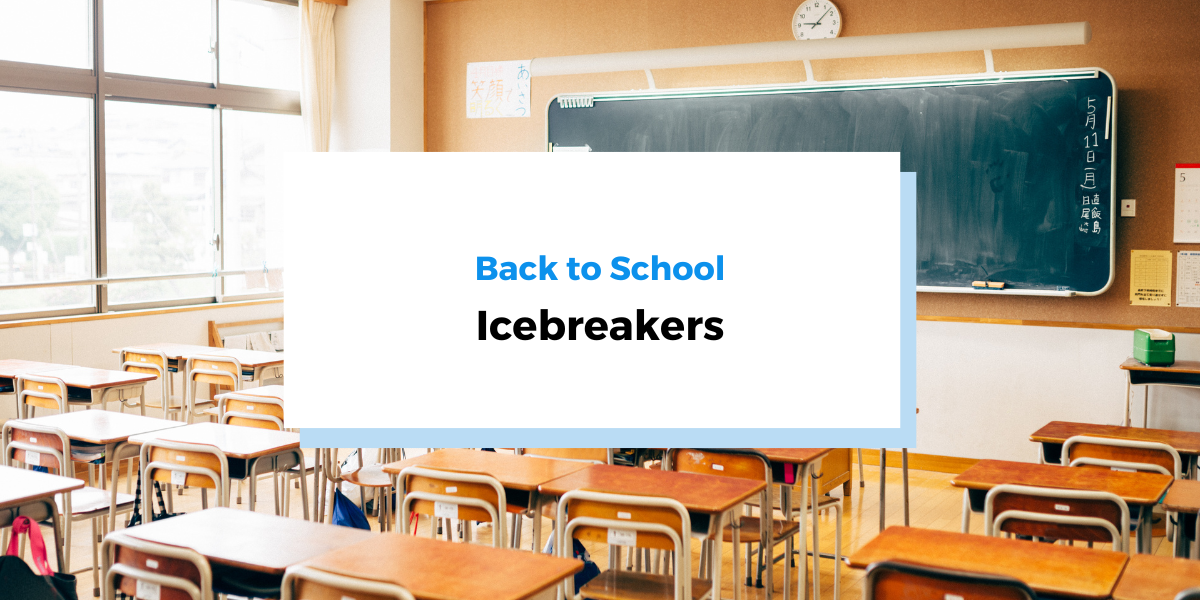For school administrators, admissions and enrollment goals are always of primary concern.
You’re probably already aware of the benefits of increased student retention, like greater revenue, more engagement, and a close-knit community.
However, knowing the importance of increased retention is not the same as being able to retain families and students.
Especially in today’s highly competitive environment, public schools should constantly listen, gather feedback, and evolve to meet each student’s needs appropriately.
This article will give you five actionable strategies for reducing drop-out rates and improving student satisfaction at your institution.
- Form a Student Retention Committee
- Connect With Students From Day One
- Address the Diverse Needs of Your Students
- Practice Early Intervention With At-Risk Students
- Use Surveys to Gather Feedback
- Improve Retention With These Strategies
Form a Student Retention Committee
Regardless of their department or program, it is more critical than ever that your staff is aware of the importance of student retention rate.
Every education professional has been affected by increased student attrition rates—which means that every department should be invested in promoting student retention at your school.
Forming a cross-departmental committee dedicated to improving student retention will centralize those efforts. As education marketing expert Brandi Eppolito writes for FinalSite:
A retention committee can help identify the root cause of enrollment issues and address challenges head-on. Because it’s usually composed of staff and faculty members from across your institution, you benefit from a wide range of perspectives. And by including a representative from each department, you can ensure retention efforts become a part of your school’s culture.
The goal of a student retention committee is to discuss problems and solutions that can encourage students to continue being enrolled at your school.
With a diverse team of school staff and teachers, you can devise a comprehensive strategy, delegate tasks, and hold each other accountable as you work toward your retention goals.
Unfortunately, most schools are still failing to initiate a student retention strategy.
According to the EMA’s State of the Independent School Report, only one in four private schools has a dedicated retention committee.
By forming a retention team at your school, you’ll stay ahead of the competition and ensure your efforts pay off.
Connect With Students From Day One
To have the best impact on your students and ensure that as many of them obtain degree completion, it’s important to establish a connection with them that begins on admission day.
In case of any issues, students will be more likely to ask for help when they strongly connect with your school’s faculty and staff.
These education professionals can offer guidance and support services to students at a critical time and keep students from dropping out.
Encouraging higher “knownness” (or relational teaching practices) makes students feel more seen and valued as people, which leads to more engagement and can boost retention rates.
As one study by Hillary L. Greene Nolan at the University of Michigan found:
High-knownness teachers had personal connections with students (e.g., asked about students’ lives outside of school), put students at ease (e.g., encouraged them on difficult work), and shared in positive emotions (e.g., laughed together), whereas low-knownness teachers spent more time addressing perceived misbehavior and embarrassing or mocking students in front of the class.
Moreover, one Gallup study found that student engagement and positive attitudes were significantly related to student academic growth and academic skills.
The top quartile of student engagement consistently contained more students meeting and exceeding proficiency requirements.
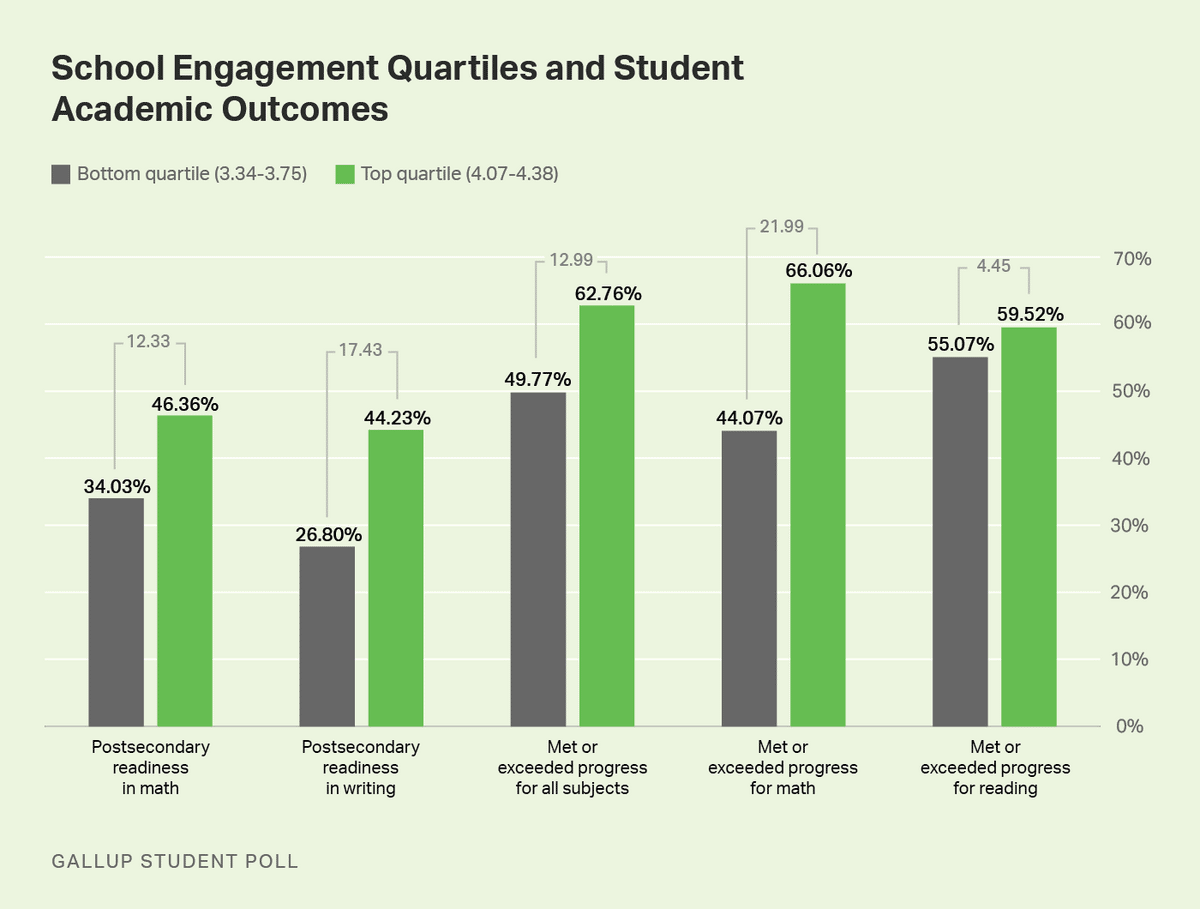
Source: Gallup
One technique for increasing connection with students is encouraging each staff member to learn every student’s name as quickly as possible.
After the first few weeks of classes, check with the staff members to see how many of the students’ names they can correctly match with faces.
Other ways to build community within your school include:
- Assigning a few new student profiles to each faculty member at the beginning of the year and encouraging them to develop mentorship connections.
- Creating orientation sessions to familiarize students with their peers, available resources, student services, and advisors.
- Set up academic advising for incoming students to cover academic performance and offer academic support throughout the year.
- Setting up mentoring and academic success programs to support at-risk students.
- Using communication tools to automate check-ins and follow-ups with students.
You can also develop an online community with your students by engaging on the social media platforms they use most often.
Set up social media groups where students can connect with their peers based on various extracurricular activities, clubs, or interests.
Using technology to connect with students (and connect them) can significantly improve the student experience.
Address the Diverse Needs of Your Students
To improve student retention, schools should prioritize giving students the resources they need to succeed.
Unfortunately, it’s a human tendency to fall into patterns of behavior that might exclude or ignore those who are different from us.
But as a school with a large student population, it’s your job to build a thriving learning experience for students of all backgrounds and needs.
Every student needs something different, which is why it can be difficult to create a curriculum and school culture that works for everyone.
When it comes to designing educational materials, it’s best to take the Universal Design for Learning (UDL) approach, which suggests offering a variety of options in the three key areas of teaching:
- Engagement (how students participate)—such as including group work, active learning, online learning, and self-assessments.
- Representation (how course content is delivered)—like using readable fonts and recorded lectures.
- Expression (how students display what they’ve learned)—like written assignments, team presentations, and other active learning assignments.
The table below lists some of the guidelines pertaining to these key areas.
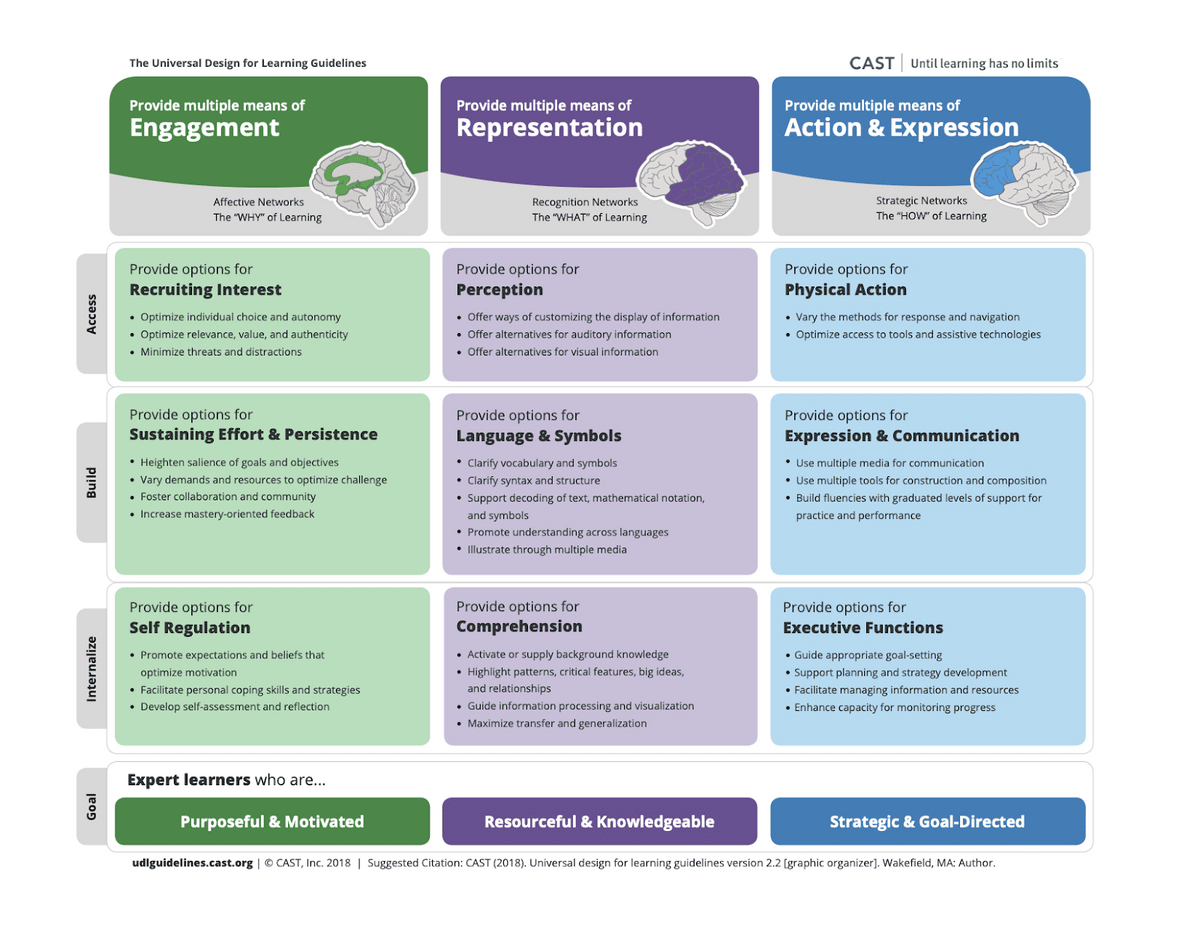
Source: University of Rochester
But meeting diverse needs extends beyond the classroom. This is especially important if your school accommodates nontraditional students with specific needs.
For example, some of your adult students or college students may work full-time and would benefit from a more flexible schedule or online courses.
Other students might be part of a marginalized group—whether it be racial, religious, gender/sexual identity, or a disability—and without appropriate diversity and inclusion practices, they may feel isolated.
Hiring a diverse staff and promoting inclusion in every aspect of school life can go a long way in supporting these students and increasing retention across your student body.
To support your students’ diverse needs, consider the following practices:
- Flexible schedules, like weekend or evening classes
- Online classes
- Guidance services to provide academic or emotional support and career advice
- Student groups that provide peer mentorship
- Financial aid for students who may have financial concerns
Making all students feel included and supporting their needs will certainly make them appreciate your school, which can go a long way when it comes to retaining them.
Practice Early Intervention With At-Risk Students
To increase school retention, it’s essential to have an ongoing assessment of students who are having academic difficulties and may be at risk of dropping out.
Intervening early by involving school faculty, staff, and parents can help get those students back on track.
Key indicators of struggling students include:
- Repeated absences
- Frequent tardiness
- Declining grades
- Being behind on their graduation plan
Collecting data on these indicators is the first step to addressing low graduation rates.
With the right information at your disposal, you’ll gain a deeper understanding of which students are struggling and why they might be motivated to stay the course.
Choose certain behavioral triggers that set off automated alerts to keep you aware of at-risk students.
You may want to assign specific tags or segments to sort by risk type, like transfer student or academic probation.
Moreover, you may even want to sort at-risk students into quadrants, like this student resiliency chart used by Jefferson County Public Schools:
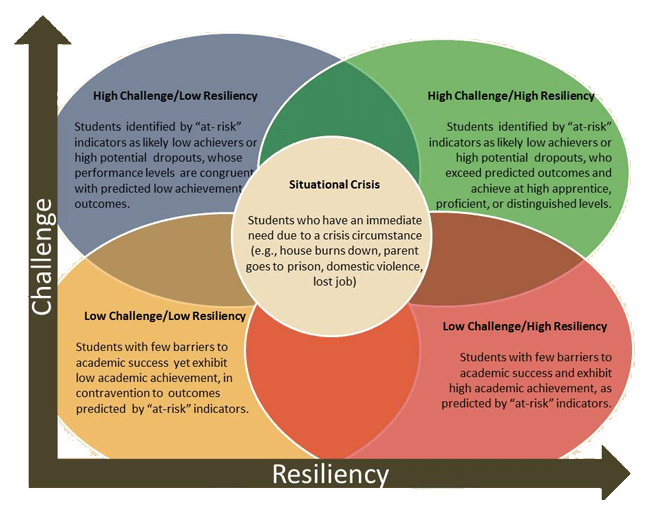
Source: JCPS
Once you’ve identified at-risk students, it’s important to intervene early.
As soon as a student seems to experience a personal, financial, or academic issue, it’s important to reach out and let them know your team is available to help them.
Your entire faculty should be on board with helping students turn things around.
Develop a systematic approach for teachers who come into contact with students daily to notice and report early warning signs.
If applicable, partner with parents to develop an intervention plan to properly equip students with the tools and support they need to succeed.
You can also use your communication platform to check in with students at the right time.
Remind students of important and interesting opportunities, and send push notifications encouraging at-risk students to join online communities that might help them get back on track.
You might even want to gamify important milestones by offering prizes or virtual badges for completed checklist items.
Use Surveys to Gather Feedback
One of the best ways to increase retention is to learn what students like—and what isn’t working for them.
And the easiest way to learn what students think is by asking them directly, like in the survey shown below.
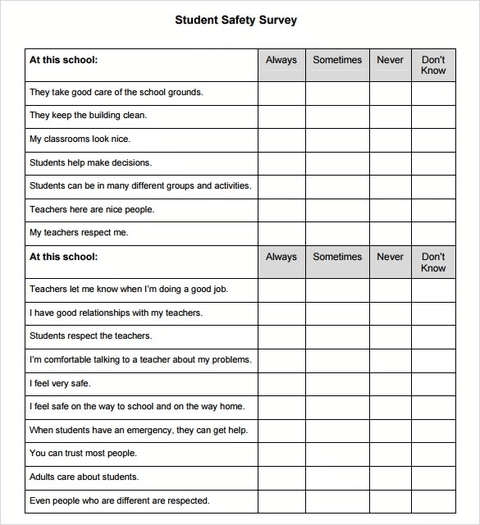
Source: Sample Templates
Surveys can help private schools find out how their students feel, what they struggle with, and what they most want to get out of their school experience.
This data provides essential insight into what to improve to retain more students.
And don’t skew your survey results by only giving them to successful students.
It would also be beneficial to survey students who chose not to enroll in your school or those who decided to leave after attending for a semester or more.
Do your best to find out why your school wasn’t the best fit for them.
Once you know why students and their families decide to leave, look for patterns.
You may not be able to adjust for everything students disapprove of, but you may be able to make small tweaks to your processes and offer more value to students.
Regular student engagement polls and surveys let you become better acquainted with your students and any obstacles they may be dealing with.
With the right insights, you’ll have predictive analytics to be able to address issues quickly and prevent some problems before they even begin.
When offering in-person surveys, be sure to follow best practices to ensure authentic results.
Students may not feel comfortable giving honest feedback if they’re unsure whether their answers will be anonymous.
Edutopia writer Emelina Minero suggests the following (based on a Trinidad Garza Early College High School process) for best results:
To preserve students’ anonymity, the teachers step out of the classroom, and school counselors come in to administer the surveys. They give the surveys twice a year, about six to eight weeks into each semester, allowing students to discover what does and doesn’t work for them in the classroom before taking the survey.
The counselors emphasize the importance of responding honestly and the power of using their voice, and over time, when teachers change their instruction based on their feedback, students see the impact of their honest responses.
You can also make it easier for students to provide feedback by sending regular surveys through your email marketing platform.
For instance, with Regpack’s survey tool, you can easily create online polls, post-class surveys, and trigger-based email campaigns to touch base with students at exactly the right time.
Improve Retention With These Strategies
The retention strategies listed above can significantly impact your school’s performance and student success rates—but only if everyone at your school is on board.
Getting buy-in from your administrative staff, teachers, and faculty is essential.
Start by forming a student retention committee with a cross-departmental base of diverse voices and experiences.
Commit to designing effective student success programs that build community, meet students’ diverse needs, and intervene with at-risk students in time to prevent attrition.
And don’t forget to collect feedback whenever possible so that you’re working from accurate data.
Increasing retention rates is about more than getting more students in seats; it can be a powerful strategy for improving student success rates, meeting your enrollment goals, and building a stronger, healthier educational institution for all.




